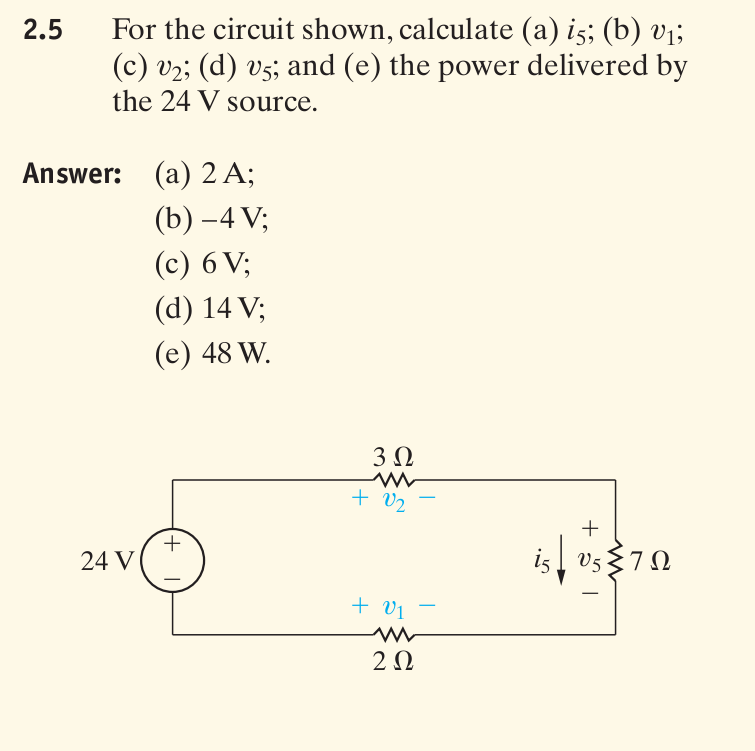 So I'm in an introductory circuit analysis class where all we have learned so far are Kirchhoff's and Ohm's Law. I am practicing how to solve these circuits, but for some reason I can't understand this example. I keep getting 3 Amps for \$i_5\$, but it says the answer is 2 A? I end up getting an equation like this:
So I'm in an introductory circuit analysis class where all we have learned so far are Kirchhoff's and Ohm's Law. I am practicing how to solve these circuits, but for some reason I can't understand this example. I keep getting 3 Amps for \$i_5\$, but it says the answer is 2 A? I end up getting an equation like this:
$$3i_5 + 7i_5 - 2i_5 = 24$$
$$8i_5 = 24$$
$$i_5 = 3\ \mathrm{(V/Ohm)} = 3\ \mathrm{Amps}$$
